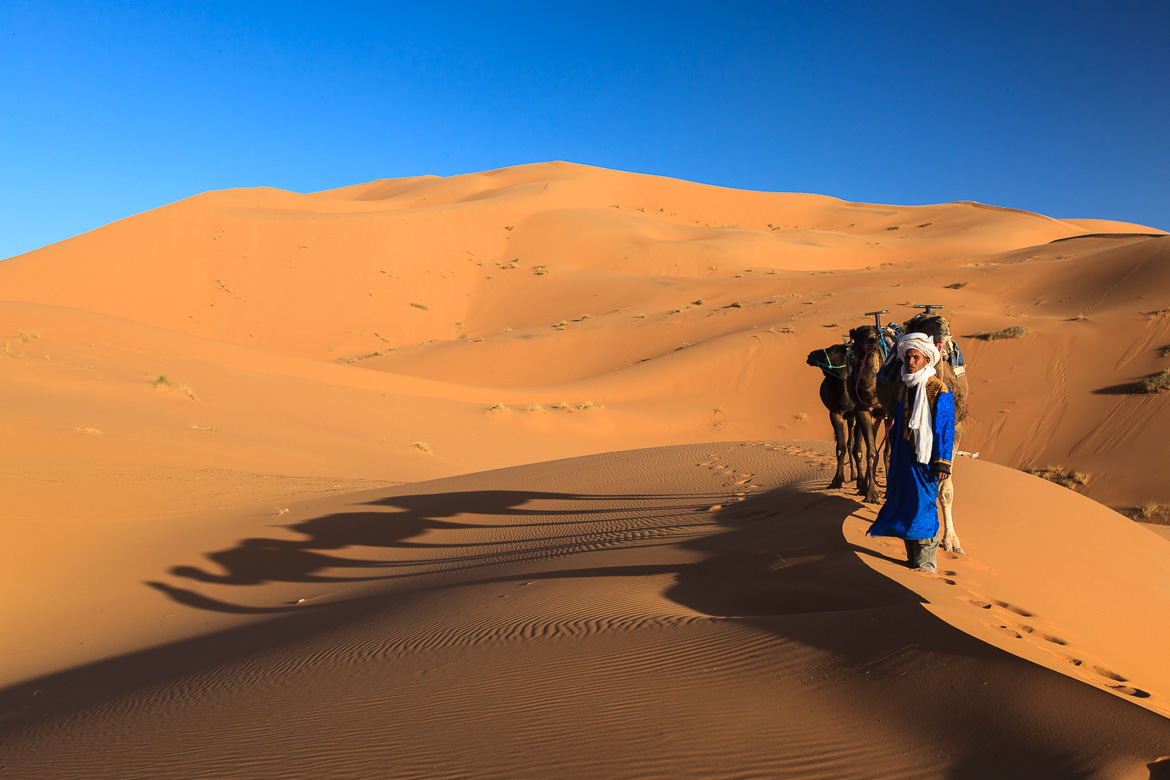Constant High Pressure
For any desert to form it must be a lack of or very little precipitation. We have two dominant high pressure zones around the globe, one roughly situated along the tropic of cancer and the other south of the equator around the tropic of Capricorn. Above the equator the warm and humid air masses rise and spread towards both the south and the north. When they raise they cool down and the tropical area around the equator gets a lot of rain.
But further north and south towards the two tropics the air accumulates and starts sinking down. The air heats up and can carry more moist, so condensation and cloud formation becomes impossible. We get the blue skies of our high pressure zones.
The Saharan and Arabian Deserts are formed by this phenomena, but several of the Asian deserts a little bit further north like in Iran, Afghanistan and Turkmenistan can also thank their existence to this constant high pressure around the tropics and spreading northwards. And south of the equator the Namib Desert is partially created by this pressure zone.
Rain Shadow
But there are other reasons why certain areas don’t have any precipitation. If a fairly constant wind is blowing and mountains in the landscape are blocking the air and clouds, rain or snow will fall on the windward side of the mountains, but it will be dry desert like conditions on the other side, where the air is sinking and heated up as the pressure increases.
The Patagonian semi-arid landscape is a typical example of that. And I show a few photographs from South America, where the Andes mountain range, with peaks that at many places exceed 6,000 metres, blocks the westerly winds. To the east of the Andes there are rivers and wetlands teeming with wild life and just a little bit further west there is a total desert. From one hour to the next, if you are travelling by car, the landscape changes character. I have in the slide show underneath here shown a couple of images from the east and west side of the Andes.
Continental Inland Deserts
The air is picking up humidity over the seas. Sometimes the land is so far from the coast that all rain (or snow) has fallen to the ground earlier on, and the air blowing over the land is dry and cannot carry any clouds or moist to the area. This is especially prevalent in inland Asia, where Uzbekistan, Kazakhstan and the Gobi Desert in Mongolia and China are examples of such arid or semi-arid areas. In the photo gallery below I have included an image from the steppes north of the Gobi desert.
Coastal Deserts
Maybe the most fascinating deserts of all are the coastal deserts. They are formed by cold currents running along the coast, which we have both along South America’s and Africa’s west coasts. The currents are the Humboldt along Chile and Peru and the Benguela Current along South Africa and Namibia. They run northwards from Antarctica and the surface water goes seawards, so cold deeper water can well up.
Along the north Chilean coast the temperature is 10°C lower than it normally should be at that latitude. Due to the cold water the air masses sink down and the air is further cooled down in contact with the surface water. We get an inversion layer (the air is warmer higher up). The cold air condenses and forms enormous banks of fog. But although there often is fog outside the coast, there is no precipitation.
Sometimes the fog stays offshore; sometimes the banks of fog will sweep inland and cover the coastal area in fog. But further inland the sky is totally clear and nothing at all can grow. The Atacama Desert is one of the driest places on earth. However, along the coast some special life forms have developed that can absorb the humidity in the air, so although there is no precipitation some special plants can grow.
Some beetles have developed a technique to utilise the early morning dew. They stand upside down in the sand and the dew condenses on their body and will follow some tracks along their bodies down to the mouth, where the beetle can drink the water. The get only a few drops, but that is enough for the beetle to survive.
In a few images I have illustrated the fog banks outside both Chile’s and Namibia’s coasts and also the dry coastal area further inland and shown examples of the vegetation that has found a way of surviving in this special conditions.


